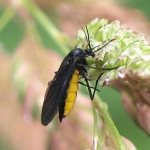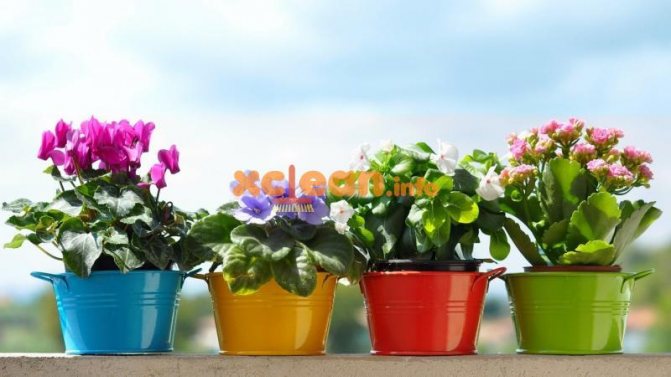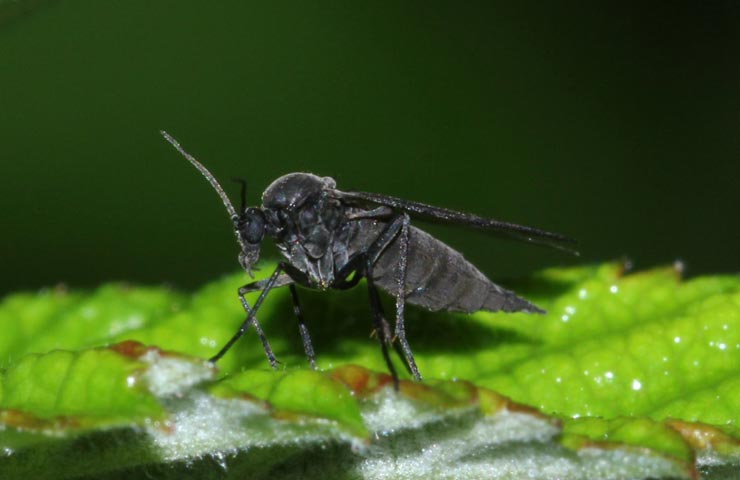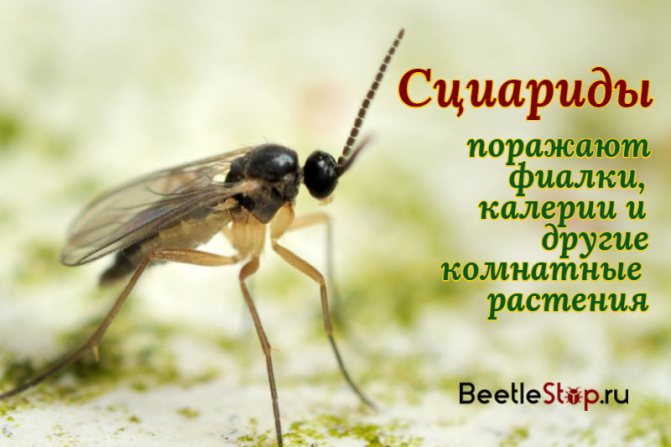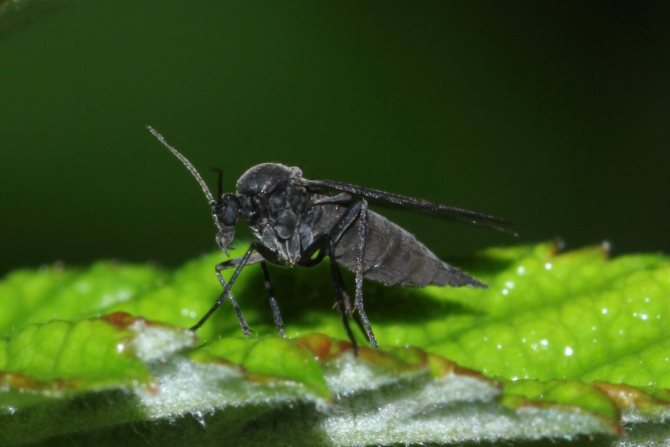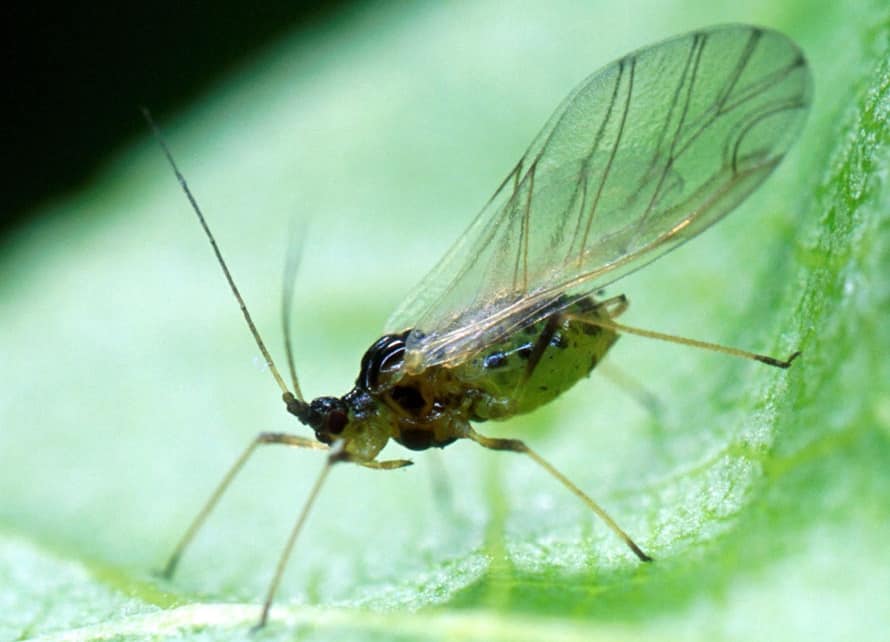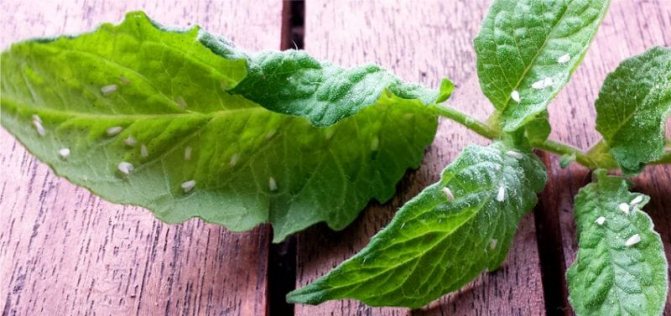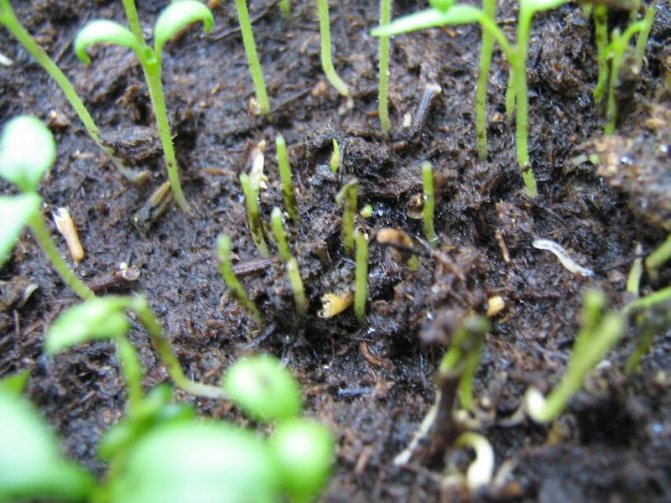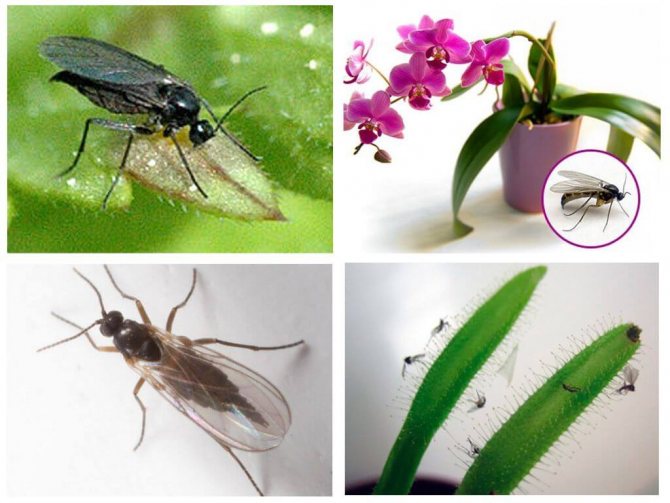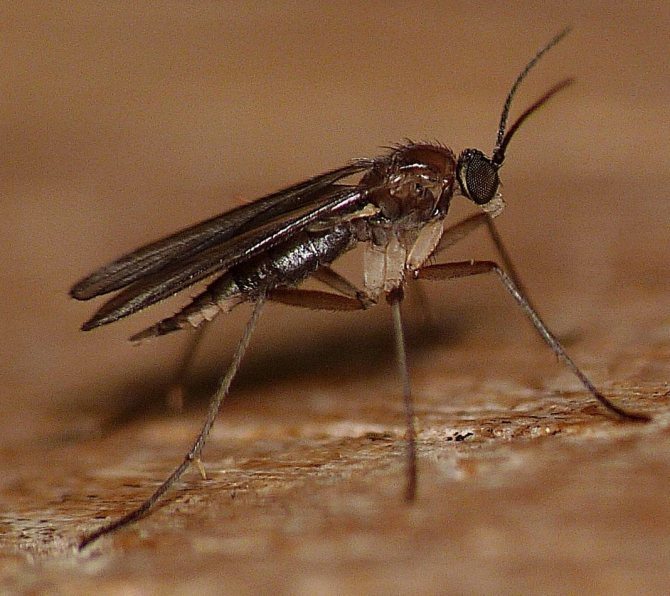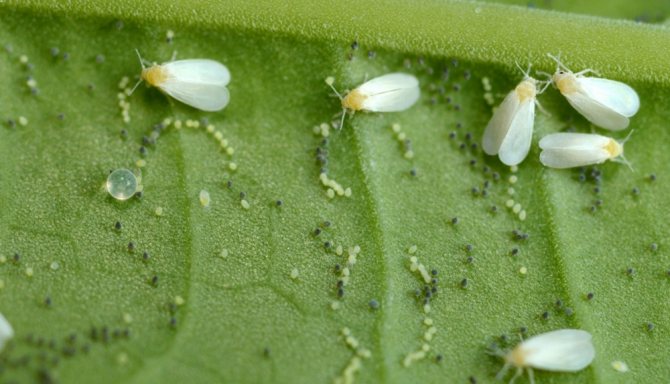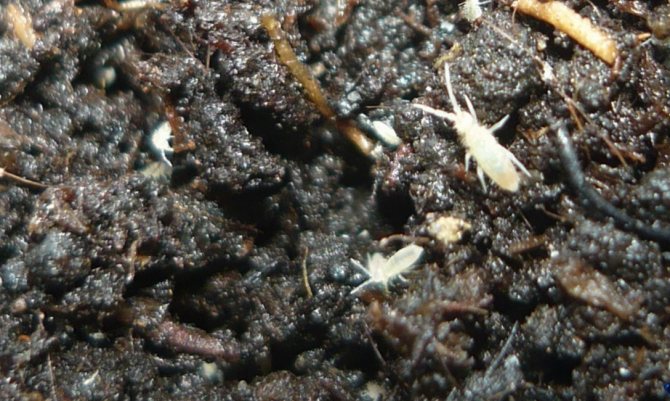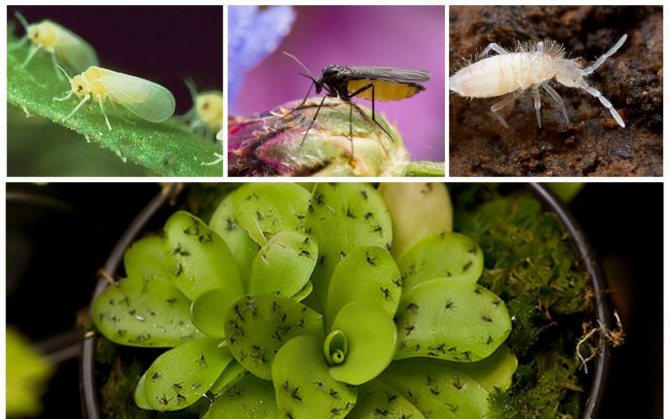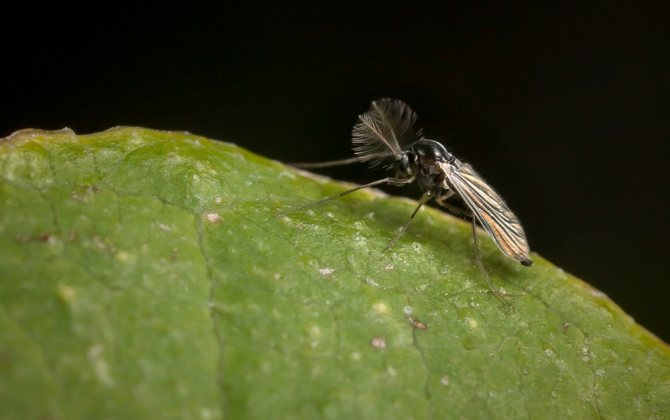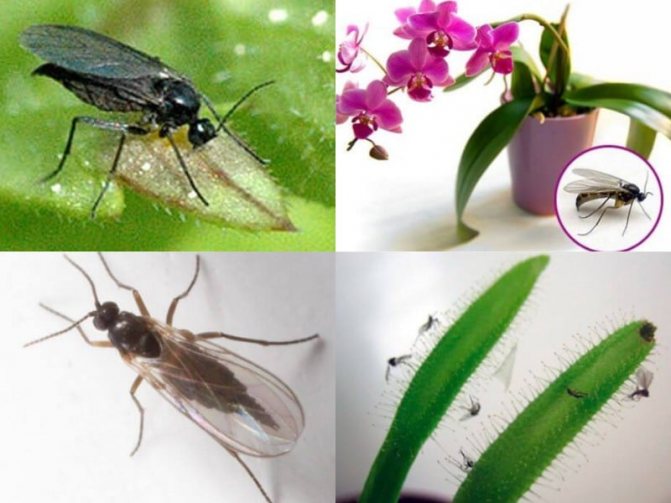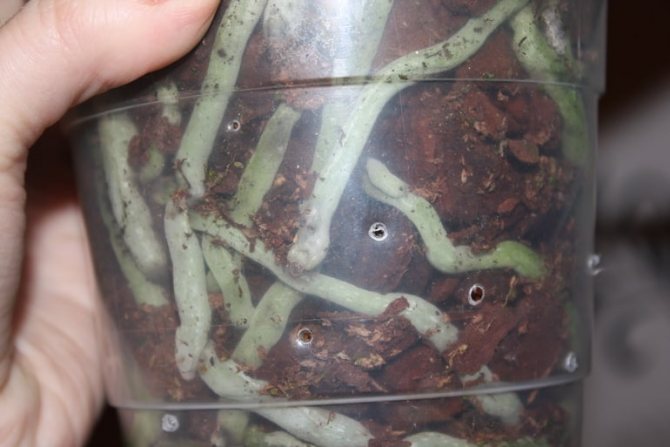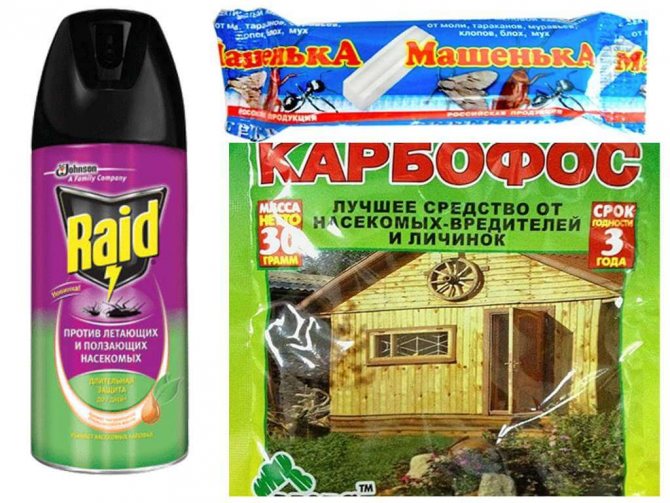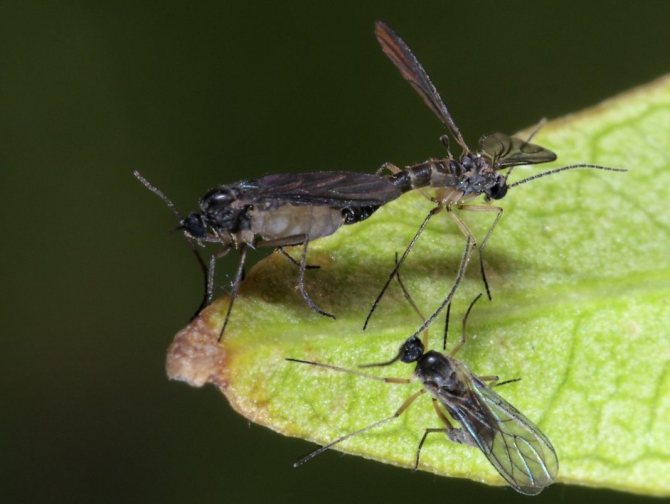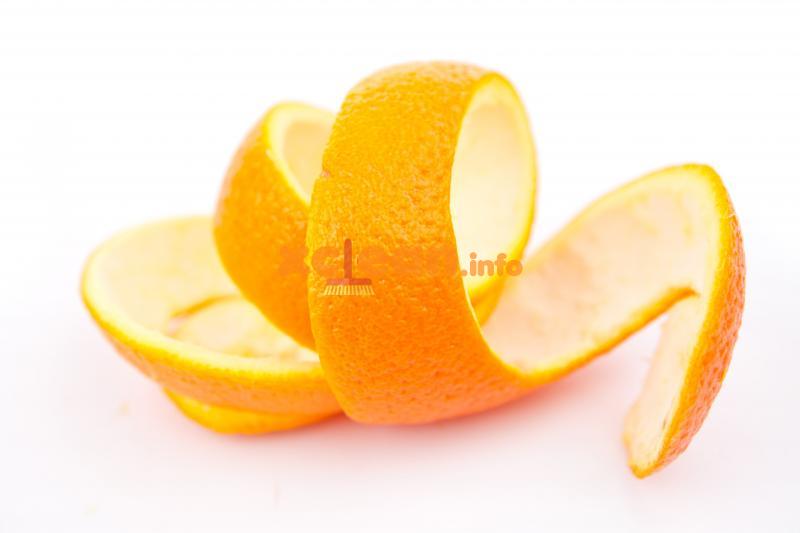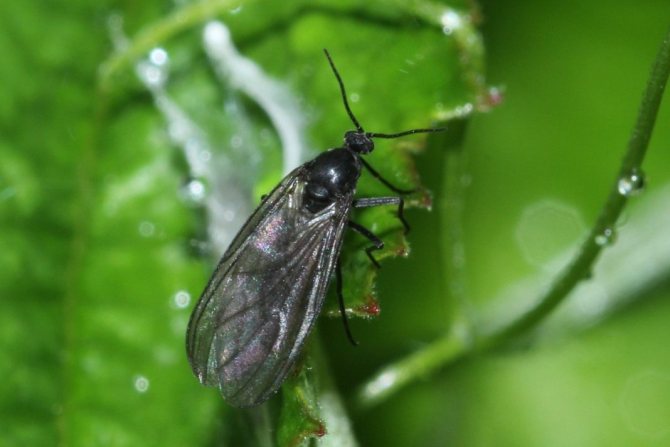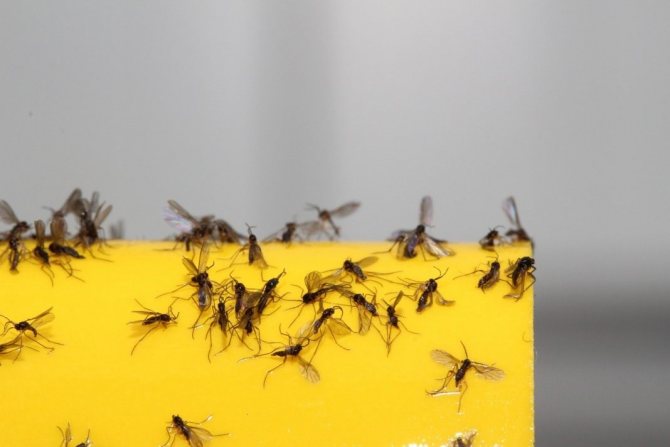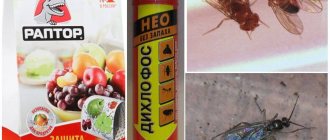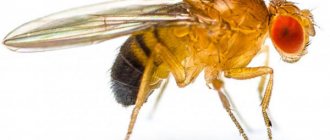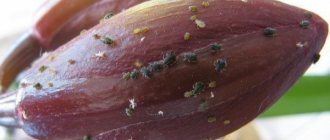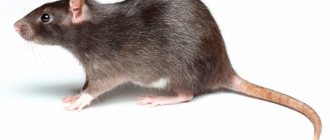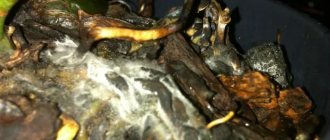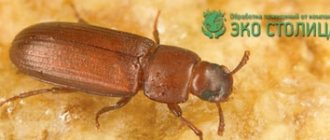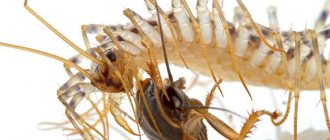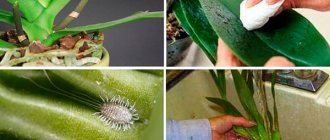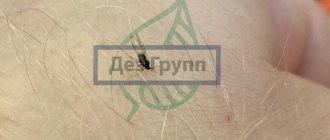House flowers create a cozy atmosphere, make the air cleaner, and make us happier. But sometimes all the joy is overshadowed by such a nuisance as the appearance of midges or, more precisely, sciaris. They can attack any house plant, but Saintpaulias (violets) are especially affected.
Sciarids (Latin Sciaridae), they are, as they say in the people, mushroom gnats - small insects from the order Diptera (Latin Diptera). The first representatives of sciarids appeared many millions of years ago; now these insects are considered one of the most ancient living organisms that have survived to our time. At present, about one and a half thousand different species belonging to thirty genera have a scientific description. And about twenty thousand more species have not yet been thoroughly studied. Naturally, all these types of sciarids differ from each other in size, color, and so on. But these differences are practically indistinguishable by the human eye and are visible only under a microscope.
For domestic plants of the middle lane, mainly three types of sciarids are dangerous: Bradysia, Sciara, Lycoriella. They are all very similar to each other.
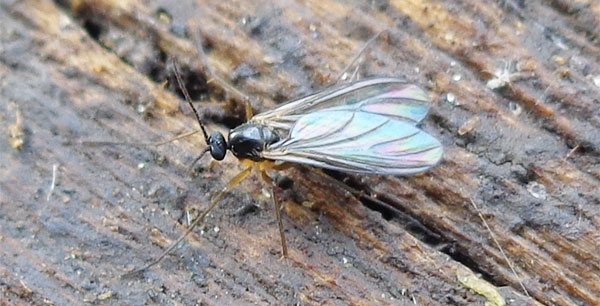
In general, adult mushroom gnats are small flies 3-4 mm long, usually black or dark gray in color. Young sciarids are mosquitoes about 2 mm in size, and the larvae are white worms with a black head.


The peak of reproduction of mushroom mosquitoes usually occurs in the cold season, when watering of plants becomes less frequent, but the soil dries out more slowly. The soil becomes too acidic, which leads to the reproduction of insects, just like watering a flower with tea leaves, which forms a breeding ground for them.
The main harm to the plant is brought not by the midges themselves, but by their larvae, which develop in moist sour soil and feed on the delicate tips of the roots, thereby undermining the basic vitality of the plant. A plant with an affected root system usually gets sick, withers, does not bloom and, as a result, may die. The harm caused by adult sciarids cannot be called devastating. The owners are upset mainly by the fact that insects spoil the appearance of the plant with their presence. However, if the number of midges increases significantly, they begin to feed on the aerial parts of the plant, preferring tender young shoots.
To understand how to get rid of midges in indoor flowers irrevocably, you need to know the channels of their penetration. Mushroom mosquitoes enter the room from the outside, for example, through hoods, or with a bouquet brought from the forest. Rooms with warm and humid climates are especially suitable for them. Another popular habitat for sciarids is food waste such as rotten fruits or vegetables.
But still, most often mushroom mosquitoes are brought in with newly acquired pot plants, so you should take it as a rule:
[!] Each new flower must definitely go through a two-week quarantine!
Quarantine implies a thorough examination of a new plant, including, if possible, the root system, then the plant must be washed and treated with phytoverm.
If, nevertheless, uninvited guests settled in a flower pot, how can you get rid of them with minimal losses, without harming the plant?
What does an insect look like
Sciarids are a family of insects. It can be attributed to the mushroom mosquito or, in another way, the fly sciiar. The insect represents the order Diptera.
The mosquito is small - up to 4 mm. The body is narrow and oblong. The flying insect has a black-gray color. A characteristic feature is that the color becomes darker as it grows. The mushroom gnat has a rounded head with long antennae. The insect also has colorless front wings. Despite this, they are endowed with the ability to fly.
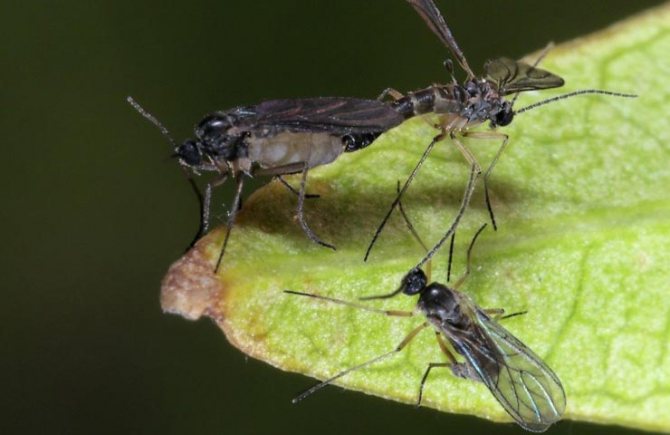

The insect has small transparent wings.
Mushroom gnats
The adults of the sciaridae family of fungal mosquitoes are black flies with an elongated body about 3-4 mm long, which lay their whitish, translucent eggs in the roots of plants. Young, newly emerging mosquitoes can be about 1.5-2 mm light gray in color. The mosquitoes themselves, if they start, usually fly in large numbers, but do no harm, except for the diseases they carry and the larvae of other pests. And the larvae of the mushroom gnat - whitish worms about 3-5 mm long with a black head - eat the root system of plants, from which it withers, stagnates, does not bloom, often reaching complete death.
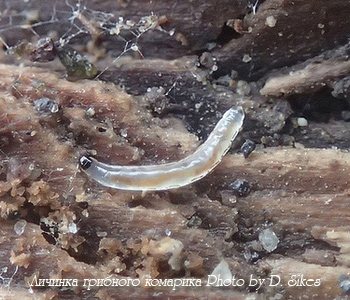

What stages of development goes through
The eggs are laid in moist soil. After 5 - 6 days, the larvae hatch. They have no legs and look like worms. If you look at the photo of sciarids, you will notice that the larvae are colorless (transparent), and the digestive system and the black head are also visible. It is the dark color that distinguishes the mosquito larvae from others. They can be up to 10 mm in size.
At this stage of development, insects cannot tolerate dry soil. If a person takes them out into the air, there is a high probability of the death of the caterpillars.
After 7 - 14 days, the larvae pupate. The transition from pupa to adult occurs in 5 days. The lifespan of an adult does not exceed 7 days. But, despite such a short period, the number of eggs in a female can reach 300 pieces.
Symptoms of the presence of midges in orchids
It is not difficult to see insects, a swarm of black midges is clearly visible above the pot with an orchid, and on the leaves, fragments of the substrate, they are noticeable with the naked eye. However, to determine whether they are harmful, you can only remove the plant from the pot.
The orchid, one way or another, will have to be transplanted, because the very fact of the appearance of a large number of midges already tells the grower that not everything is safe with the substrate. Therefore, you need to make sure that everything is in order with the root system of the orchid, and transplant it into a fresh soil mixture that excludes mold and green algae deposits.
During transplantation, the roots are carefully examined, they are washed in a weak solution of potassium permanganate, the wounds, if any, are sprinkled with activated carbon powder or cinnamon to prevent bacterial or fungal infections from entering them. The transplanted plants are kept more dry than usual for 4-7 days.
Where can you meet
Sciarids are more common in Europe. Most often they live in home flowers. This place is the most beloved of the Sciarids. Insects settle in plants with moist soil. But the appearance of a mushroom mosquito in other places is not excluded - the basement, the bathroom.


Midges can appear in high humidity
To get rid of sciarides, you first need to understand why they appeared in the room. The most common reasons are:
- excessive moisture;
- the plants are improperly cared for;
- buying an already infected plant;
- penetration of insects through ventilation, windows or doors.
Attention! Mushroom gnats love old pots, so they appear in them first. And also this can be attributed to a poor drainage system (water disposal).
After establishing the reasons why sciarids appeared in the room, it is necessary to take various methods against them.
What is dangerous
It should be noted that no sciarid attack on humans was noticed. They do not suck blood, do not bite. To confirm these facts, American scientists specially conducted research. Earth mosquitoes do not fly around the face. But, despite this, they can carry various dangerous diseases that will harm not only plants, but also humans. For example, the disease is transmitted by contact with infected flowers. Or if a person inhales mold spores that are carried by sciaris flies.
Mosquitoes negatively affect plant health. With the massive appearance of larvae in the soil, the flowers will not develop and their appearance deteriorates. Accordingly, they become lethargic. It can even reach the absence of flowering. If a person notices all these signs in plants, it is necessary to get rid of insects faster.
Description of the problem
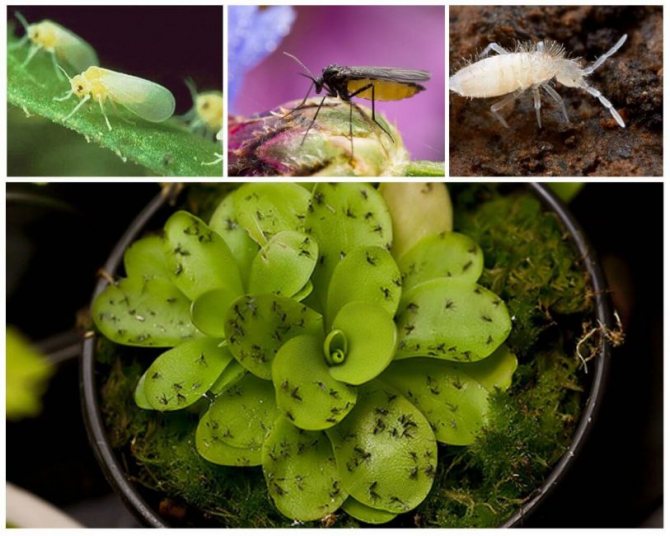

Midges in indoor colors
Often times, people involved in indoor floriculture do not pay much attention to unwanted guests appearing on their green pets, which, of course, is a mistake. The small size of the pests should not be misleading. The very fact of their appearance suggests that the plant is in danger, since it is of food interest for midges.
In addition, the life cycle of these pests is very short - from a few days to several weeks. The second generation will appear very quickly and will be more numerous. If you ignore the problem, you can lose your favorite culture in less than a month.
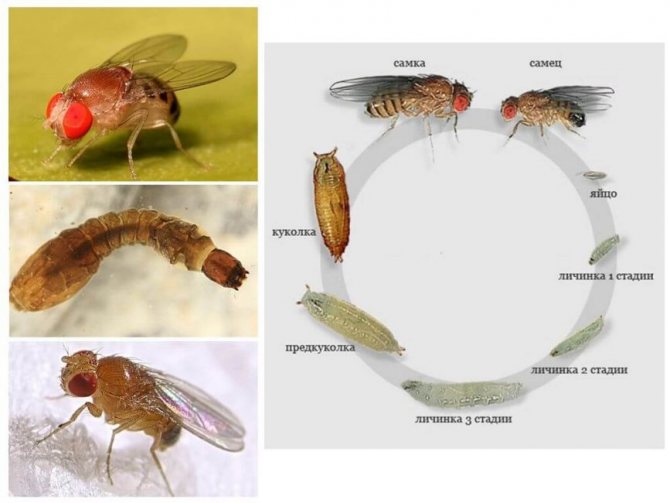

Midges and their larvae
The danger in most cases is not the midges themselves, but their larvae living in the ground and feeding on the roots of a houseplant. Another vulnerable part is their flowers. Stems and leaves, as a rule, are of no interest for this type of pest.
It is difficult and simple to answer the question of why midges settle on indoor plants at the same time. Simply because an acceptable breeding environment is created on the ground. And it is difficult because there are many ways of penetration of pests into the home and it is very difficult to block even some of them.
In particular, midges can get into a house with a poor-quality substrate, appear when a culture is transplanted from a garden or other room, get into an apartment simply through an open window, etc.
The species diversity of midges dangerous for indoor plants is very great. Consider which midges can harm indoor plants. Usually, they are classified according to their appearance and divided into three large groups:
Fruit flies
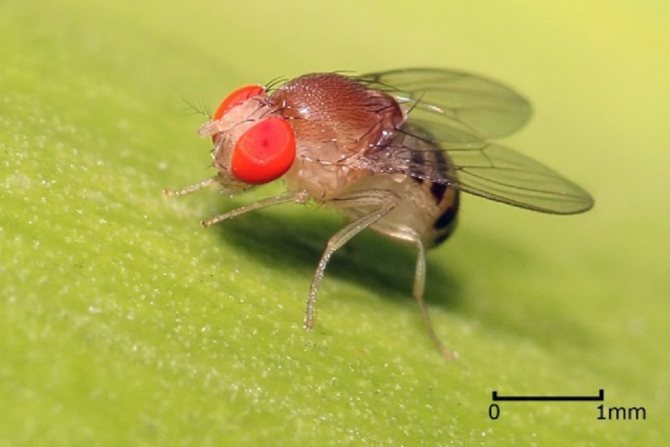

Tanzanian fruit fly is a typical representative of fruit midges
Fruit flies
They are fruit or fruit midges. Outwardly, they resemble reduced copies of ordinary flies.
Coloring is very diverse, but yellow-brown specimens are predominantly found. Sizes - up to 3.5 mm.
Sciarids
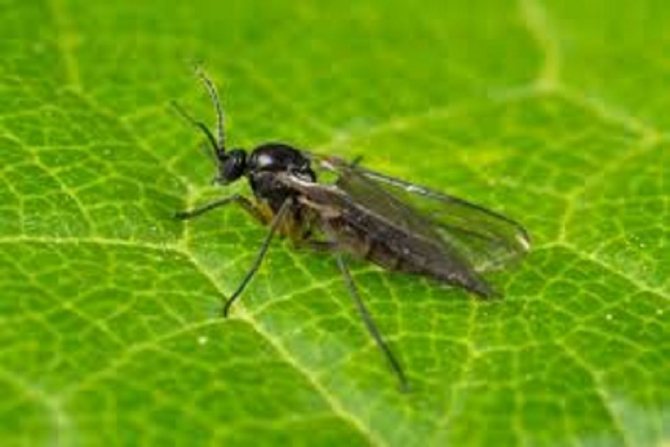

Detritus is the most common representative of the family in Europe
Sciarids
Another name is black midges or mushroom gnats. One of the most extensive families, it is estimated that the number of species is several times greater than that of fruit flies.
These pests are similar to small mosquitoes or flying black aphids. Sizes - up to 2 mm.
Aleurodids
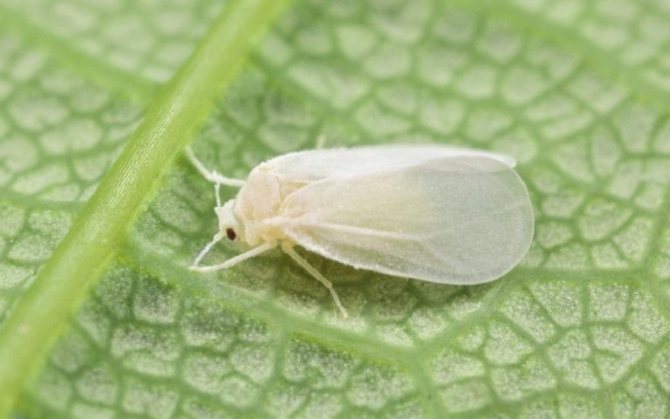

American whitefly - the main pest of most ornamental crops
Aleurodids
They're whiteflies. Outwardly they look like small flies or aphids. A distinctive feature is the white color of the body and wings. They like to hide on the underside of leaves. Sizes - from 1.3 to 1.8 mm.
Fortunately for flower growers, despite the huge variety of arthropod parasites, the means of dealing with them are almost the same, which greatly simplifies the approach to solving the problem.
Other pests
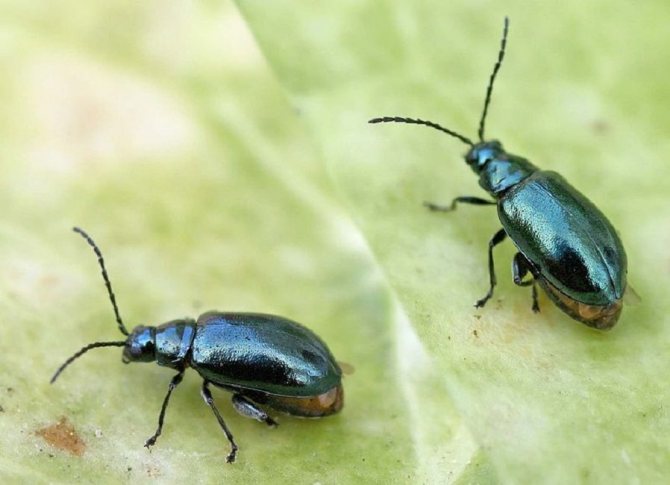

Weed flea - a typical representative of earthen fleas
Other pests
Often other insects that parasitize plants are confused with midges - earthen flower fleas. Unlike the previously considered pests, they belong not only to a completely different family, but also to the order (Coleoptera). Flower earthen fleas are actually small beetles.
They, of course, can parasitize on indoor plants (mainly affecting young plants and seedlings), but these cases are quite rare. The main food base for these pests is plants from vegetable gardens and meadows: sorrel, heather and shepherd's purse. In some cases, they can act as pests of vegetables and fruits.
Puffs, or springtails, are another species of arthropods that are often confused with midges. They do not fly, but they have a jumping fork that allows them to move between plants quite easily.
Like earthen fleas, this pest rarely affects indoor plants, since its natural habitat requires a large amount of water. In addition, podura breed exclusively in the aquatic environment.
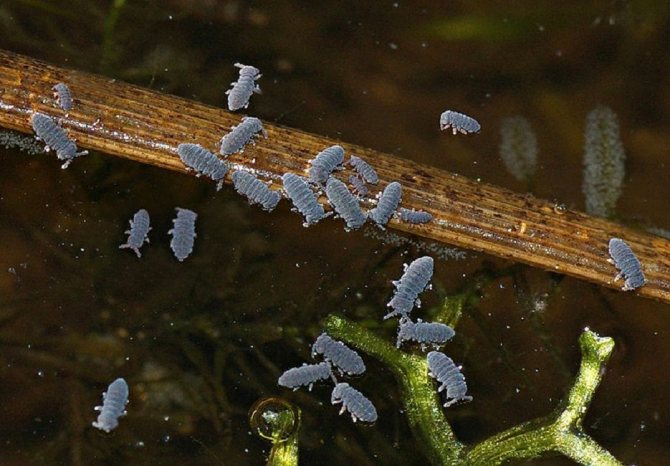

Poduras usually live in shallow bodies of water
How to fight
The fight against such insects must be comprehensive. That is, it is necessary to destroy mosquitoes at all stages of development. There are various methods for dealing with sciaris, they are listed in the table.
| Name | Description |
| Special aerosols | The most popular are Raptor, Raid, Dichlorvos. It is best to place food, clothing, and other items in a drawer before spraying. Furniture can be wrapped with foil. The disadvantage of the method is that you need to leave the room for a while. It should also be remembered that such aerosols are harmful to pets, so they also need to be isolated for a while. |
| Processing window sills, shelves and other places with plants | This method is used as a prophylaxis for surviving insects. After spraying, wash the area thoroughly with soap and water. |
| Application of insecticides | They use Aktellik, Aktara, Fitoverm, Karbofos. Before use, chemicals should be diluted with water according to the instructions. Then mix everything thoroughly. The resulting solution is poured into the soil. The course of use is 2 times. The interval between applications should be at least 7 days. For the best effect, it is not recommended to water the plant for 1 - 2 days after use. |
| Fight against sciarid larvae | Bazudin, Thunder will do. The top layer is replaced with a new one with granules. When watering, the agent dissolves and pests are destroyed |
| Duct tape | Can be bought for flies. If this is not possible, the use of scotch tape is allowed. |
| Anti-cockroach remedies | For example, a pencil Mashenka. It is applied to the top of the pot. Another use is to crumble the pencil and sprinkle it into the soil. |
| Egg fight | You can use Citropac in tablet form. For preparation, it is necessary to dilute the drug in 5 liters of water. Pour the resulting solution into the soil. After the initial processing, the result will be noticeable. For the best effect, it is allowed to repeat the procedure 1 - 2 more times. |
What are the folk ways
In addition to chemicals, there are folk methods of dealing with mushroom mosquitoes. Most Popular:
- Collecting flying insects with a vacuum cleaner;
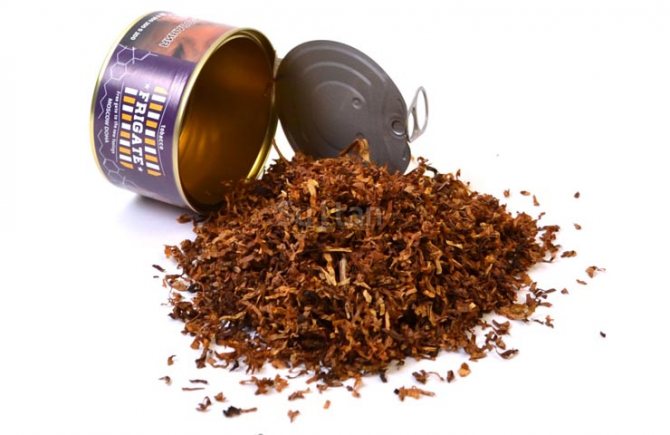

You can use a tobacco based solution
- Arrange deterrent foods next to the pot. For example, dill, garlic, orange. With this method, insects will not be able to reproduce. When they enter the house, they will immediately fly away, since the smell scares them.
- Purchase plants designed to feed sciarids. For example, nepentes. Negative aspects of the technique - the plant requires complex care.
- Use soapy water to process flowers. For preparation, mix the ingredient with 1 liter of clean water.The plant needs to be processed at least 5 times with an interval of 7 days.
- Prepare a tobacco solution. It is necessary to take the ingredient dry and dilute it in 1000 ml of water. Leave on for 2 days. Filter and add another 2 liters of liquid. Use the prepared solution up to 5 times. The interval must be at least 7 days.
- Use ash. After application, the environment becomes alkaline and sciarids cannot live in such a place. Ash must be sprinkled on the surface of the pot. When watering the plant, it will form an alkaline environment.
This video will help you learn more about indoor midges:
Is there any prevention
To prevent the appearance of insects in the room, certain rules must be observed. Namely:
- before planting a plant, pay attention to the soil and try to always look at it for cleanliness, there should be no plant residues;
- first it is advisable to pour the new soil with potassium permanganate (solution) and cover it with charcoal;
- if you need to buy a new pot, after purchasing it is advisable to wash it in hot water and soap and, if possible, treat it with potassium permanganate;
- take care of drainage;
- you do not need to add too much organic fertilizer, such as manure;
- do not use bad water for irrigation, for example, some people, in order to save money, take liquid from the aquarium and it is especially forbidden to use water with a green coating;
- do not pour coffee or tea leaves into the drip tray;
- with each watering of the plant, remove excess water from the pan;
- view the plant for dead parts and remove them.
It is best to deal with insects immediately after emergence. If you neglect this point, after a couple of days you can see not 1 midge, but many. Moreover, the female will lay eggs, and larvae will appear from them. It is necessary to fight sciarids at any stage of development.
Soil fly control measures
If a flock of mushroom mosquitoes is found, then it is better to immediately take drastic measures. You need to fight Sciarids on two flanks - from the air and on the ground. If you poison only flying individuals, then new sciarids will be removed from the larvae in the soil every day.
To destroy the larvae, you need to use an insecticide solution. I would like to immediately warn you that the more powerful the drug is, the more effective the fight. For example, a phytoverm solution may be ineffective in some cases. Actellic (2 ml / l), decis or karbofos are best suited. Do not be afraid to harm the plant, almost all the drugs produced for the fight against pests and diseases are not phytotoxic.
Flying insects will also have to be fought, for this it is better to use the same means that are used to fight flies. These are aerosols, like the well-known dichlorvos and the like. Sometimes you can find a recommendation to use "Raptor" or "Fumitox" records in such a case, but they are usually not very effective.
If many of us have more than once come across the fact that, including at night, say, the Raptor, some very annoying mosquito was still found in the morning, then what to say about sciarids - you cannot completely rely on these funds, even if change records quite often. Although you can try with these funds first, the main thing is to tightly close the aquarium, if any.
If the mushroom mosquitoes are divorced in winter, then the plants (already watered with insecticide) are best taken to a separate room or to the staircase (so that the neighbors do not spot it) and spray the soil in the pots with an aerosol on top. After two minutes, the plants can be brought in and left, for example, in the bathroom. The room where the plants were standing should also be sprayed with an aerosol and thoroughly ventilated after half an hour.
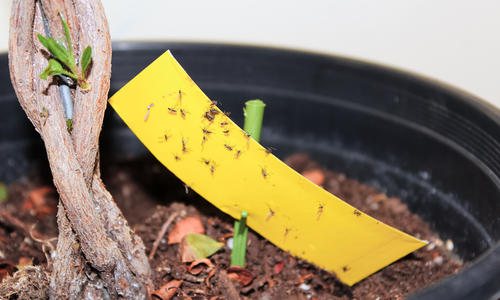

In the fight against pests, all means are good, as long as there is no harm to the plants, so clap your hands and catch flying flies with a vacuum cleaner.
The treatment of the room and pots with plants with aerosols against flying insects, as well as watering the soil with insecticides, may have to be repeated, preferably until the pests are completely gone.
Do not use food products or infusions from them for plant feeding. Such as meat or fish broths, sleeping tea, sugar water, milk, etc. In indoor plants, the physiology is not like in humans, while food products will decompose to components that are easily digestible by plants, but simply rot, whole collections of pests can settle and multiply on plants and in the soil.
If you are going to feed the plants with organic matter, for example, a mullein, then it is better to do this without watering the infusion of cow cake, but adding it to the soil during transplantation. The most convenient option - in an empty pot, the walls are smeared with a semi-liquid cake to the middle of their height, then the plant is placed and the space between the roots and the walls of the pot is covered with earth. In this case, there is no smell of overheating manure.
If you have a lot of plants that are especially fond of moist soil, then it makes sense to switch to watering from the pallet so that the top layer of the soil remains dry. But at the same time, it must be remembered that the water in the sump should be fresh, and not sour, with the appearance of swamp mud.
Timely control of emerging insects can also be considered an important preventive measure. It is impossible to start the reproduction of sciarids to such an extent when they are already flying in flocks. Otherwise, you may not find a single plant that is not affected by the larvae, no matter how good the soil is in them.
The soil, purchased or prepared by oneself, in order to prevent any pests and diseases, must be disinfected (boiled with boiling water, roasted in the oven, spilled with insecticide, kept in the freezer, etc.).

